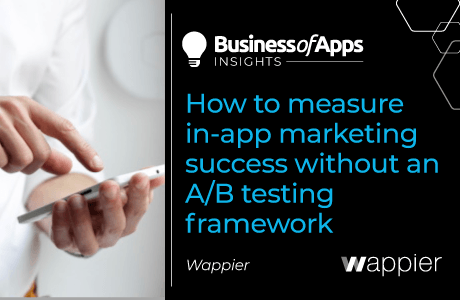The free-to-play market may be the most profitable gaming segment of all time, but it’s also the most competitive. Studios can’t just release games for free and expect to earn a profit without monetizing uniquely engaging experiences. That means developers must precisely optimize monetization initiatives to maximize revenue and user engagement. As the free-to-play market grows, leading developers have turned to the world of behavioral economics, which lies at the intersection of psychology and economics, to understand what motivates the purchasing behaviors of F2P players. When integrated into pricing strategy, these insights can boost revenue, highlight new opportunities, and even give developers a competitive edge.
What is behavioral economics?
Behavioral economics is the study of the psychological, cultural, and social factors that influence the financial and commercial habits of individuals and organizations alike. When developers combine game design with behavioral economic theory, it’s possible to steer the player journey to improve monetization from ads and in-app purchases. Together these principles promote player engagement and improve retention while also unlocking new revenue streams for developers.
The challenge of behavioral economics, however, is that human behavior is not always rational. To monetize games under the F2P model, game designers, and monetization managers must communicate the objective and contextual value of conversion activities. Here are a few behavioral strategies as examples:
Account for mental accounting
Economist Richard Thaler first coined the phrase “mental accounting” to represent the fact that humans view gains in relative, rather than absolute terms. From a financial perspective, this means that the perceived quality of a deal can be just as crucial as the objective value it delivers.
Here are a few examples of mental accounting in action: Some customers may only buy items at a discount from their regular price. Others could be convinced to buy limited-edition items that would be difficult to obtain elsewhere. Meanwhile, many fall victim to sunk cost fallacy, which drives consumers to continue spending in an attempt to recoup the loss of a particular investment. In each of these examples, consumers apply a relative value that is distinct from objective value.
By the same token, mental accounting applies to F2P games that offer in-app purchases. These transactions don’t necessarily have objective value — they represent digital goods or content that exists solely in the context of that game. Still, developers can frame IAPs to highlight a subjective value that interests particular player demographics.
This mental accounting dynamic comes into play when developers implement loot boxes, for example. These mystery boxes contain a random selection of virtual prizes — ranging from powerful virtual objects and in-game currency to new outfits or skins. While you cannot assign an objective value to a box of random rewards, developers can still position it as a “good deal” by doing the following:
- Ensuring loot boxes are conveniently priced and accessible
- Offering a loot box bundle deal that maximizes the overall value
- Creating loot box tiers:
- A basic loot box contains a random selection of items and can be earned through standard play
- A premium-priced loot box includes at least one guaranteed rare value item
In recent years, loot boxes have drawn criticism for their reliance on gambling mechanics. For developers seeking a less controversial approach, ‘Season Passes’ (like Fortnite’s “Battle Pass,” and Clash of Clans “Gold Pass”) tap into this same mental accounting dynamic. In this model, players pay a fee to unlock the opportunity to win even bigger in-game rewards throughout gameplay. Even long-time, loyal players have a propensity to hold out for the right deal, and season passes play into this behavior. Unlike loot boxes, season passes rely less on luck — they reward players simply for playing the game. Developers can dramatically boost revenue as a result.
Provide choices, but not too many choices
As a rule, customers expect to have choices in the way they consume content, and that’s a positive thing. In practice, however, there is such a thing as too much choice. Customers encounter the dilemma of “overchoice” when choosing between too many restaurant items or too many streaming services, for example. Overchoice contributes to decision fatigue and dissatisfaction with the associated brand. In some cases, it can even discourage users from engaging with monetized game elements entirely.
This can be a challenge in a F2P market where there is already no shortage of choice. App storefronts feature millions of games across multiple genres, each of which can include several monetized elements — developers who aren’t selective in the choices they present risk losing differentiation or alienating customers with complexity.
For a F2P monetization manager, there are a few key considerations to keep in mind. Firstly, be selective in the monetization options you integrate into your game. Rather than offering rewarded advertising, IAPs, downloadable content, optional subscription fees, and more, simplify the mechanics for the consumer. If you include every available option, most players will choose the default and ignore the rest. Instead, behavioral economics suggests that players should have just two options available, tailored to their specific temperaments.
Leverage in-game social norms
People do not make economic decisions in a vacuum — they are far more likely to be influenced by the spending behaviors of other people around them. This behavior goes by many names: a commitment to social norms, a herd mentality, or even FOMO (fear of missing out). In short, people are more willing to commit to things that they observe others doing.
Master Mobile Media Buying Design Secrets! 📱🚀
Ready to skyrocket your campaign results? Grab your free guide packed with design strategies for better ad performance.
Learn MoreAs multiplayer games become more prevalent, it’s clear that social norms apply to digital experiences as well. One of the most common examples are cosmetic skins in F2P games. While players start their first session with standard skins, they will eventually meet someone using a premium or paid skin. This interaction will encourage them to purchase the item for themselves.
The principle of in-game social norms also extends to limited-time events. Consider Destiny 2, which runs a variety of seasonal activities that feature unique levels and cosmetics. Since this content disappears once the event is complete, it encourages players to log in and experience it alongside other online players. Mid-way through the event, Bungie will offer Destiny 2 players reminder notifications that include mentions of what other players are currently enjoying.
Behavioral economics gives developers an edge
Although behavioral economics was not conceived as a F2P game design strategy, it’s a valuable tool and even a strategic advantage. As the free-to-play space becomes more competitive, monetization managers that consider behavioral economics will engage consumers more successfully. When matched with the ability to segment players and apply user-level optimization, these psychological principles also drive higher ARPU. These strategies may then be scaled efficiently through machine learning to ensure maximum engagement at each consumer touchpoint.















